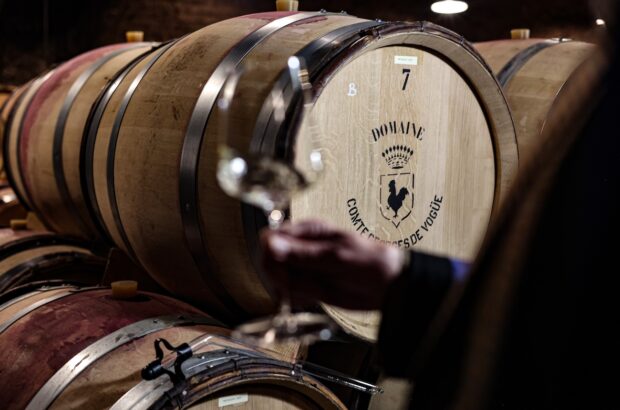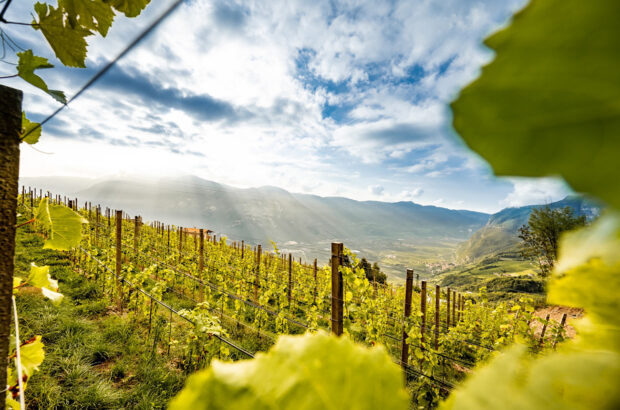It’s no secret that the California wine industry is facing an excess market. The key trend is driven by consumer demand (younger consumers are swapping wine for RTDs, spirits, non-alcoholic beverages or cannabis), which primes conditions for overproduction and ‘pressure starting from the grower [that] will create inventory bulges and drive higher-than-needed inventory turns in 2024’, according to Silicon Valley Bank’s (SVB) latest US wine report,
This is something Jeff Bitter, president of Allied Grape Growers, called attention to at this January’s Unified Wine & Grape Symposium. He prompted grape growers to remove a net total of more than 12,000ha throughout California to counteract the current challenges with lagging demand in the wine industry, a trend that reflects a global movement.
‘Nobody is making money sitting on inventory,’ said Bitter.
The call to action is Bitter’s second attempt for California growers to pull up this amount of plantings; the first came after the 2019 harvest, when fruit was left unpicked and tanks left full of unsold wine. At the time, Bitter said, ‘I’ve been doing this for well over 20 years, and I can honestly say we don’t see these kinds of pictures very often in the industry.’
Only 7,280ha were removed following his speech at the 2020 Unified Wine & Grape Symposium.
Now, four years later, the once-rare photos that Bitter referenced are becoming more common. ‘Three out of the last five years — 2019, 2020 and 2023 — we’ve left grapes on the vine. We’ve been structurally oversupplied for five years now, which points to the fact that we need to reduce our bearing acres to rightsize supply and demand,’ Bitter told Decanter.
Regional recommendations
This year, Bitter said he wanted to be more specific to add a target for where the market was long: ‘If you fall into one of these categories, then I’m talking to you; if you don’t, then I’m not talking to you. I have to be specific; otherwise, grape growers think it’s somebody else’s responsibility to remove production.’
Bitter spoke directly to the Central Valley producers in the audience at the Symposium. He urged the producers selling wine for less than $6 per bottle to remove a total of 6,000ha, breaking down to 1,600ha of Zinfandel, 1,600ha of Merlot and Cabernet Sauvignon, 1,600ha of Barbera, Carignan, Grenache and Ruby Cab, and 1,200ha of ‘generic white wines and floral wines’.
He also honed in on producers in the Lodi and Delta interior regions, calling for the wineries who sell bottles in the range of $6 to $11 to pull up 6,000ha of grapes. His breakdown of the removal is as follows: 2,400ha of Merlot and Cabernet Sauvignon, 1,600ha of Zinfandel, 1,600ha of aged or poor-producing Chardonnay and Sauvignon Blanc; and 400ha of Malbec, Petite Sirah and any other ‘miscellaneous red wines’.
‘The wine industry is cyclical, and we have been here before,’ Bruce Lundquist, co-founder and CEO of Rack & Riddle, which has a modern winery in Lodi, told Decanter in response to Bitter’s speech. ‘While I agree that there is a grape oversupply overall, challenging times present opportunities. Now is a time to match vineyard replanting with both terroir and consumer demand, as there are too many acres planted relative to demand.’
Bitter cited some 7,700 vineyard hectares planted in 2023, according to the annual nursery survey. In order to account for the vines’ fruition in three years’ time, he encouraged wineries to consider removing older vines in the Coastal California regions – including 2,000ha of Cabernet Sauvignon, 1,600ha of Pinot Noir from Monterey and Santa Barbara, 1,200ha of Syrah and aged Merlot, 800ha of Chardonnay in Mendocino, Monterey and Santa Barbara, 400ha of Zinfandel from Mendocino and Paso Robles and 400ha of ‘other white varieties’.
Future-proofing grape farming
‘We need to pull out more than what’s coming into production to actually decrease bearing acres,’ added Bitter, who mentioned there are candidates for removal regardless of where they are in the state.
Hence, his recommendation that Sonoma wineries – where new production growth isn’t anticipated – remove a total of 2,000 vineyard hectares – including 800ha of Cabernet Sauvignon, 400ha of Zinfandel and 400ha of old Pinot Noir vines.
While critics might argue a better solution is to stop planting grapes without a contract or altogether, Bitter emphasised that removing over 12,140ha is immediate action. ‘If we want to help ourselves today, we have to take action today.’
After an unsuccessful plea in 2020, Bitter suggested how he plans to witness more impact this time around. Allied Grape Growers represents about 500 growers throughout California. ‘It’s about growers understanding that they are part of the list of acreage that needs to come out,’ said Bitter, adding that he’ll be calling out growers whose grapes fit into the categories of aged out, non-productive vineyards.
‘If there’s no demand for the variety you’re producing or quality you’re producing then I’m going to communicate that with you before you start investing or farming it for the 2024 grape season.’







